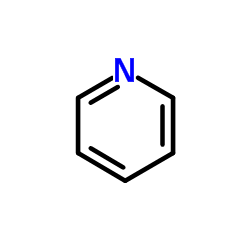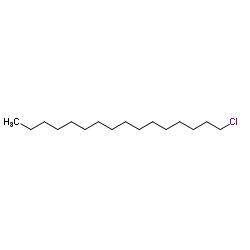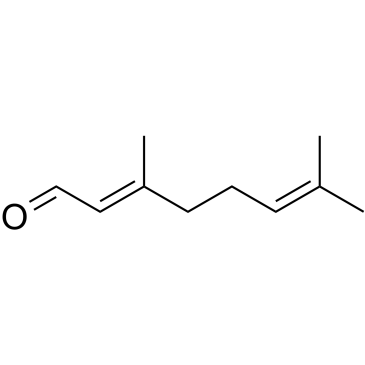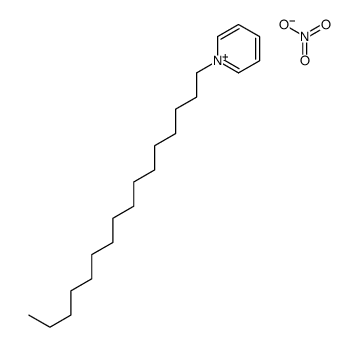123-03-5
| 中文名 | 西吡氯铵 |
|---|---|
| 英文名 | cetylpyridinium chloride |
| 中文别名 |
氯化-N-十六烷基吡啶翁盐
1-十六烷基吡啶氯化物 氯化十六烷基吡啶 盐酸芬司匹利 |
| 英文别名 |
Pyrisept
1-HEXADECYL-PYRIDINIUM,CHLORIDE Pristacin MFCD00011731 EINECS 204-593-9 Cetafilm Medilave Pyridinium, 1-hexadecyl-, chloride (1:1) cetylpyridinium chloride Aktivex cpc Ceepryn chloride Pionin B 651P 1-hexadecylpyridinum chloride Cetamium Ceepryn Biosept N-hexadecylpyridinium chloride Cetyl-pyridinium chloride Merothol Merocet Dobendan hexadecylpyridinium chloride 1-Hexadecylpyridinium chloride Cloruro di cetilpiridinio tserigel Ipanol 1-hexadecylpyridin-1-ium,chloride Newkalgen B 651P N-cetyl-pyridinium chloride |
| 描述 | Cetylpyridinium chloride,一种阳离子季铵化合物,是一种具有广谱活性的抗菌剂。Cetylpyridinium chloride 是一种有效的抗 HBV 衣壳装配抑制剂,IC50 为 2.5 μM。Cetylpyridinium chloride 被用于杀虫剂和各种漱口水以及其他个人护理产品中。 |
|---|---|
| 相关类别 | |
| 靶点 |
IC50: 2.5 μM (HBV capsid assembly)[1] |
| 体外研究 | 氯化十六烷基吡啶与二聚体病毒核衣壳蛋白(称为核心蛋白或HBcAg)特异性相互作用。与其他HBV抑制剂相比,西吡氯铵对HepG2.2.15细胞株的HBV粒子数有明显的降低作用。氯化十六烷基吡啶抑制衣壳组装并导致HBV生物发生减少[1]。氯化十六烷基吡啶是一种安全的广谱抗菌剂,可预防生物膜形成和牙龈炎[2]。 |
| 体内研究 | 氯化十六烷基吡啶(30μg/kg;肌肉注射;每日;连续3天;雄性C57BL/6小鼠)治疗抑制小鼠水动力模型系统中的HBV复制[1]。动物模型:雄性C57BL/6小鼠(6周龄)注射质粒[1]剂量:272μg/kg/天给药:肌肉注射;每日;连续3天结果:血清HBV DNA水平抑制,第2天降低60%,第3天下降45%。 |
| 参考文献 |
| 熔点 | 77°C |
|---|---|
| 分子式 | C21H38ClN |
| 分子量 | 339.986 |
| 精确质量 | 339.269287 |
| PSA | 3.88000 |
| LogP | 3.45940 |
| 外观性状 | 白色粉末或晶体 |
| 储存条件 | 库房低温通风干燥 |
| 稳定性 | 1%的水溶液的pH为6.0-7.0。强力振荡其水溶液会产生丰富的泡沫。具有良好的表面活性和杀菌消毒性能。 |
| 计算化学 | 1.疏水参数计算参考值(XlogP):无 2.氢键供体数量:0 3.氢键受体数量:1 4.可旋转化学键数量:15 5.互变异构体数量:无 6.拓扑分子极性表面积3.9 7.重原子数量:23 8.表面电荷:0 9.复杂度:208 10.同位素原子数量:0 11.确定原子立构中心数量:0 12.不确定原子立构中心数量:0 13.确定化学键立构中心数量:0 14.不确定化学键立构中心数量:0 15.共价键单元数量:2 |
| 更多 | 1.性状:白色固体,常带一分子的结晶水。 2.熔点:77-83℃。 3.溶解度:极易溶于水、乙醇,可溶于氯仿,几乎不溶于苯、乙醚。 |
Synonym:1-Hexadecylpyridinium chloride; CPC Section 2 - COMPOSITION, INFORMATION ON INGREDIENTS
Risk Phrases: 25 26 36/37/38 50/53 Section 3 - HAZARDS IDENTIFICATION EMERGENCY OVERVIEW
Toxic if swallowed. Very toxic by inhalation. Irritating to eyes, respiratory system and skin. Very toxic to aquatic organisms, may cause long-term adverse effects in the aquatic environment. Potential Health Effects Eye: Contact with eyes may cause severe irritation, and possible eye burns. Skin: Causes skin irritation. May be harmful if absorbed through the skin. Ingestion: Harmful if swallowed. May cause irritation of the digestive tract. Inhalation: May be fatal if inhaled. Dust is irritating to the respiratory tract. Chronic: No information found. Section 4 - FIRST AID MEASURES Eyes: In case of contact, immediately flush eyes with plenty of water for at least 15 minutes. Get medical aid immediately. Skin: In case of contact, immediately flush skin with plenty of water. Remove contaminated clothing and shoes. Get medical aid. Wash clothing before reuse. Ingestion: If swallowed, do not induce vomiting unless directed to do so by medical personnel. Never give anything by mouth to an unconscious person. Get medical aid. Inhalation: POISON material. If inhaled, get medical aid immediately. Remove victim to fresh air. If not breathing, give artificial respiration. If breathing is difficult, give oxygen. Notes to Physician: Section 5 - FIRE FIGHTING MEASURES General Information: As in any fire, wear a self-contained breathing apparatus in pressure-demand, MSHA/NIOSH (approved or equivalent), and full protective gear. During a fire, irritating and highly toxic gases may be generated by thermal decomposition or combustion. This material in sufficient quantity and reduced particle size is capable of creating a dust explosion. Runoff from fire control or dilution water may cause pollution. Extinguishing Media: Use water spray, dry chemical, carbon dioxide, or appropriate foam. Section 6 - ACCIDENTAL RELEASE MEASURES General Information: Use proper personal protective equipment as indicated in Section 8. Spills/Leaks: Vacuum or sweep up material and place into a suitable disposal container. Avoid runoff into storm sewers and ditches which lead to waterways. Clean up spills immediately, observing precautions in the Protective Equipment section. Avoid generating dusty conditions. Provide ventilation. Evacuate unnecessary personnel. Approach spill from upwind. Section 7 - HANDLING and STORAGE Handling: Wash thoroughly after handling. Remove contaminated clothing and wash before reuse. Do not get in eyes, on skin, or on clothing. Keep container tightly closed. Do not breathe dust. Do not breathe spray or mist. Use only with adequate ventilation or respiratory protection. Storage: Keep container closed when not in use. Store in a tightly closed container. Store in a cool, dry, well-ventilated area away from incompatible substances. Section 8 - EXPOSURE CONTROLS, PERSONAL PROTECTION Engineering Controls: Facilities storing or utilizing this material should be equipped with an eyewash facility and a safety shower. Use adequate ventilation to keep airborne concentrations low. Exposure Limits CAS# 123-03-5: Personal Protective Equipment Eyes: Wear appropriate protective eyeglasses or chemical safety goggles as described by OSHA's eye and face protection regulations in 29 CFR 1910.133 or European Standard EN166. Skin: Wear appropriate protective gloves to prevent skin exposure. Clothing: Wear appropriate protective clothing to prevent skin exposure. Respirators: A respiratory protection program that meets OSHA's 29 CFR 1910.134 and ANSI Z88.2 requirements or European Standard EN 149 must be followed whenever workplace conditions warrant respirator use. Section 9 - PHYSICAL AND CHEMICAL PROPERTIES Physical State: Powder Color: white Odor: characteristic odor pH: 5.2 (10g/l H2O) Vapor Pressure: Not available. Viscosity: Not available. Boiling Point: Not available. Freezing/Melting Point: 77 deg C Autoignition Temperature: Not available. Flash Point: Not available. Explosion Limits, lower: Not available. Explosion Limits, upper: Not available. Decomposition Temperature: 234 deg C Solubility in water: Soluble. Specific Gravity/Density: Molecular Formula: C21H38ClN Molecular Weight: 339.98 Section 10 - STABILITY AND REACTIVITY Chemical Stability: Stable under normal temperatures and pressures. Conditions to Avoid: Dust generation, confined spaces. Incompatibilities with Other Materials: Strong oxidizing agents. Hazardous Decomposition Products: Hydrogen chloride, nitrogen oxides, carbon monoxide, carbon dioxide. Hazardous Polymerization: Has not been reported Section 11 - TOXICOLOGICAL INFORMATION RTECS#: CAS# 123-03-5: UU4900000 LD50/LC50: CAS# 123-03-5: Draize test, rabbit, eye: 1%; Draize test, rabbit, eye: 100 mg; Draize test, rabbit, skin: 50 mg/24H Moderate; Inhalation, rat: LC50 = 90 mg/m3/4H; Oral, mouse: LD50 = 108 mg/kg; Oral, rabbit: LD50 = 400 mg/kg; Oral, rat: LD50 = 200 mg/kg. Sensitization test (guinea pig): negative. Carcinogenicity: Pyridinium, 1-hexadecyl-, chloride - Not listed by ACGIH, IARC, or NTP. Other: See actual entry in RTECS for complete information. Section 12 - ECOLOGICAL INFORMATION Ecotoxicity: Fish: Carp: 0.01 mg/l; 96 h; LC50 Section 13 - DISPOSAL CONSIDERATIONS Dispose of in a manner consistent with federal, state, and local regulations. Section 14 - TRANSPORT INFORMATION IATA Shipping Name: Toxic Solid, Organic, N.O.S. Hazard Class: 6.1 UN Number: 2811 Packing Group: I IMO Shipping Name: Toxic Solid, Organic, N.O.S. Hazard Class: 6.1 UN Number: 2811 Packing Group: I RID/ADR Shipping Name: Toxic Solid, Organic, N.O.S. Hazard Class: 6.1 UN Number: 2811 Packing group: I Section 15 - REGULATORY INFORMATION European/International Regulations European Labeling in Accordance with EC Directives Hazard Symbols: T+ N Risk Phrases: R 25 Toxic if swallowed. R 26 Very toxic by inhalation. R 36/37/38 Irritating to eyes, respiratory system and skin. R 50/53 Very toxic to aquatic organisms, may cause long-term adverse effects in the aquatic environment. Safety Phrases: S 26 In case of contact with eyes, rinse immediately with plenty of water and seek medical advice. S 28A After contact with skin, wash immediately with plenty of water. S 36/37 Wear suitable protective clothing and gloves. S 45 In case of accident or if you feel unwell, seek medical advice immediately (show the label where possible). S 61 Avoid release to the environment. Refer to special instructions/safety data sheets. WGK (Water Danger/Protection) CAS# 123-03-5: 3 Canada CAS# 123-03-5 is listed on Canada's DSL List. CAS# 123-03-5 is not listed on Canada's Ingredient Disclosure List. US FEDERAL TSCA CAS# 123-03-5 is listed on the TSCA inventory. SECTION 16 - ADDITIONAL INFORMATION N/A |
|
毒理学数据: 黑鼠经口急性毒性LD50为200mg/kg。贮运 固体用纤维桶包装,应避免与强氧化性及阴离子表面活性剂接触。 CHEMICAL IDENTIFICATION
HEALTH HAZARD DATAACUTE TOXICITY DATA
|
| 危害码 (欧洲) | T+ |
|---|---|
| 危险品运输编码 | 2811 |
| 包装等级 | III |
| 危险类别 | 6.1(b) |
| 海关编码 | 2933399090 |
|
~% 
123-03-5 |
| 文献:Journal of the Chemical Society, , p. 682 Helvetica Chimica Acta, , vol. 21, p. 223,230 |
|
~% 
123-03-5 |
| 文献:Synlett, , # 12 p. 1687 - 1692 |
| 上游产品 3 | |
|---|---|
| 下游产品 4 | |
| 海关编码 | 2933399090 |
|---|---|
| 中文概述 | 2933399090. 其他结构含非稠合吡啶环的化合物. 增值税率:17.0%. 退税率:13.0%. 监管条件:无. 最惠国关税:6.5%. 普通关税:20.0% |
| 申报要素 | 品名, 成分含量, 用途, 乌洛托品请注明外观, 6-己内酰胺请注明外观, 签约日期 |
| Summary | 2933399090. other compounds containing an unfused pyridine ring (whether or not hydrogenated) in the structure. VAT:17.0%. Tax rebate rate:13.0%. . MFN tariff:6.5%. General tariff:20.0% |







